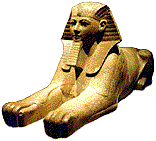

The proper Arabic name for the dance is "Raqs Sharqi", which means Oriental Dance.
The French originally called it "danse du ventre" or dance of the stomach which was
badly translated into English as belly dance. It is often referred to in much of the Middle East as "danse oriental".
Oriental dance did not originate in any one place. There are records of "castanet
dancers" in ancient Rome, using metal castanets. In ancient cultures dance was
associated with both religion and celebration. Later, each country developed forms of
dance that people did at home to entertain themselves, as well as a class of professional
dancers. Some of those professional dancers were courtesans, and others were associated
with temples of worship, such as temple dancers in India. In the Middle Eastern and North African cultures, dance
is merely a way for people to entertain themselves in family and tribal gatherings.
Both men and women dance, but in many instances, parties are segregated - one for men
and one for women!
 Morocco of NYC, a Middle Eastern dancer, instructor, researcher and historian,
Morocco of NYC, a Middle Eastern dancer, instructor, researcher and historian,
has forgotten more than most dancers will ever know!
Shira has lots of new articles on Raks Sharki past & present. Information to educate, entertain and inspire middle eastern dancers.